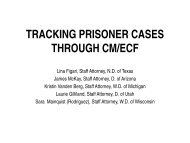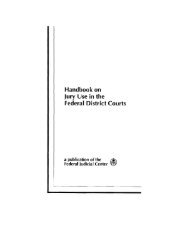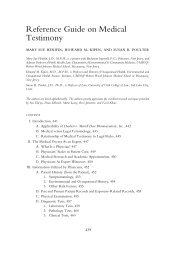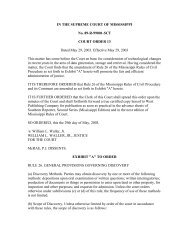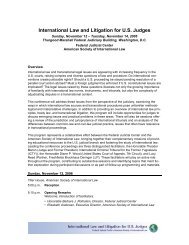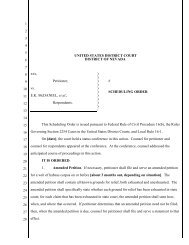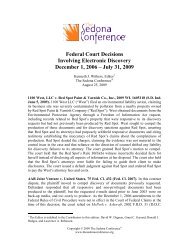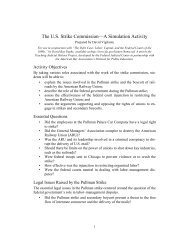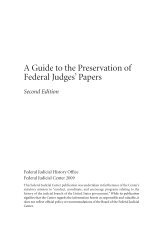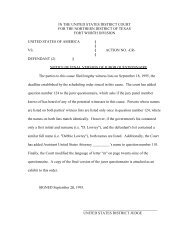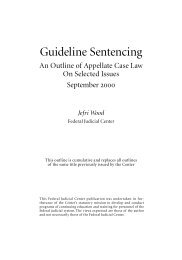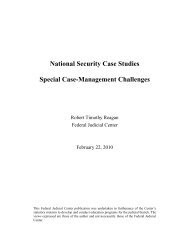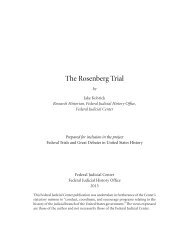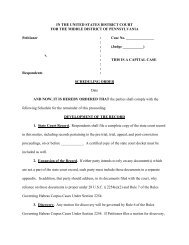Chambers Handbook for Judges - Federal Judicial Center
Chambers Handbook for Judges - Federal Judicial Center
Chambers Handbook for Judges - Federal Judicial Center
You also want an ePaper? Increase the reach of your titles
YUMPU automatically turns print PDFs into web optimized ePapers that Google loves.
made. To this end, some courts have adopted a rule that provides the<br />
following:<br />
Upon certification by a moving party that there has been no previous extension<br />
of time to plead and that the opposing party has not filed in the<br />
record an objection to an extension of time, then on an ex parte motion<br />
and order, the court will allow one extension <strong>for</strong> a period of 20 days from<br />
the time the pleading would otherwise be due. Further extensions will not<br />
be granted by stipulation but only after motion noticed <strong>for</strong> hearing according<br />
to the regular motion procedure.<br />
Motions relating to third-party practice or to jurisdiction over or<br />
sufficiency of a counterclaim or cross claim may be filed at this stage of<br />
the proceedings. They are processed in the same manner as preliminary<br />
motions.<br />
J. Alternative Dispute Resolution<br />
Courts have developed several <strong>for</strong>ms of court-annexed Alternative Dispute<br />
Resolution (ADR) over the past decade, primarily to promote settlement.<br />
(Litigants may, of course, agree to avail themselves of private<br />
ADR programs that are not affiliated with the court.) The Civil Justice<br />
Re<strong>for</strong>m Act of 1990, which directs all courts to consider the adoption<br />
of an ADR program (28 U.S.C. § 473(a)(6)), has led to increased use of<br />
these programs. Both this act and other statutes have established ADR<br />
pilot programs in courts.<br />
Some ADR programs may be more suitable <strong>for</strong> certain types of cases<br />
than others. Following is a brief description of the principal court-annexed<br />
programs.<br />
Law clerks and secretaries should inquire which (if any) ADR programs<br />
are used in their courts, exactly what involvement their judges<br />
tend to have with such programs, and what assistance is expected.<br />
1. Arbitration<br />
The litigants present their cases to an outside neutral (or panel of<br />
neutrals) called an arbitrator (or arbitrators). Attorneys from the local<br />
community generally serve as the arbitrators. The presentations are<br />
generally less <strong>for</strong>mal than a trial, and the rules of evidence are suspended.<br />
The arbitrator issues a nonbinding decision. If the parties ac-<br />
34 <strong>Chambers</strong> <strong>Handbook</strong> <strong>for</strong> <strong>Judges</strong>’ Law Clerks and Secretaries



